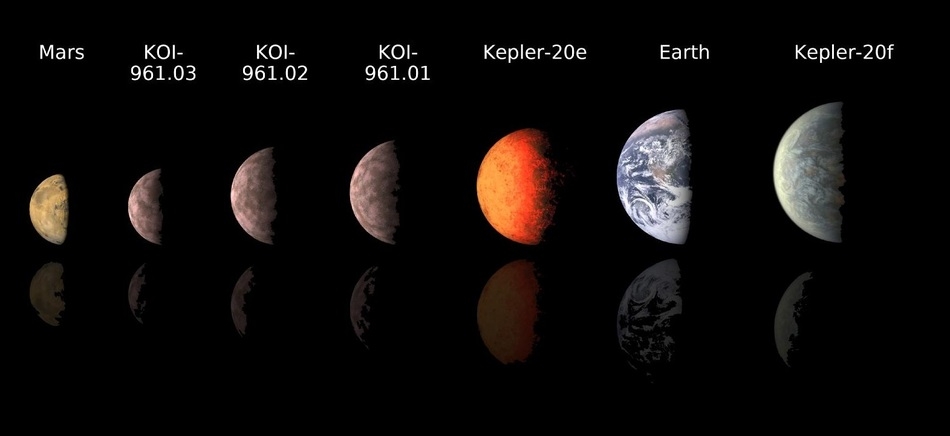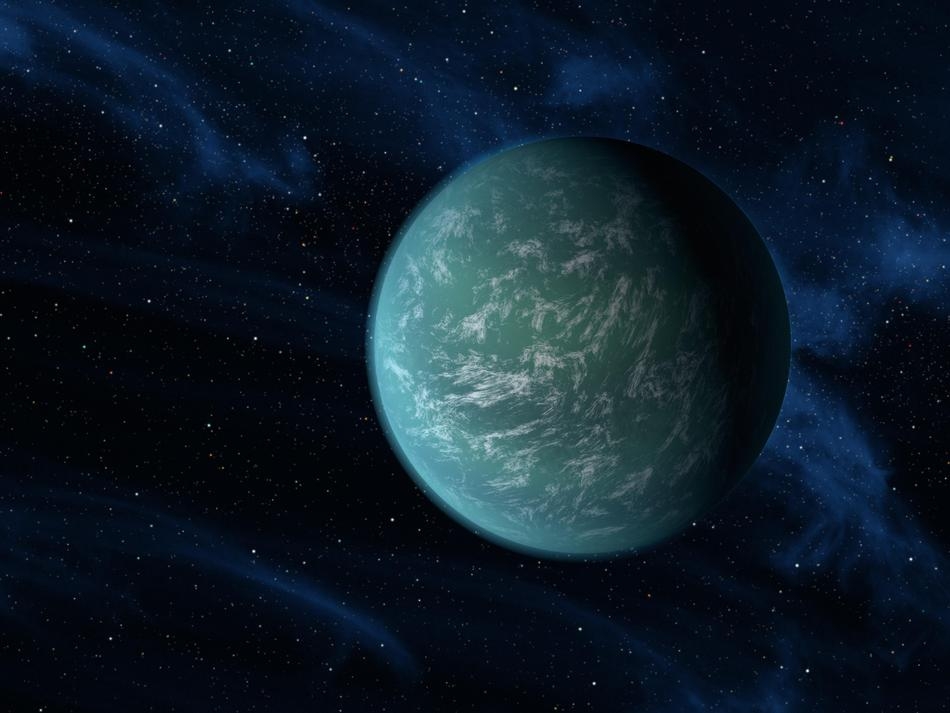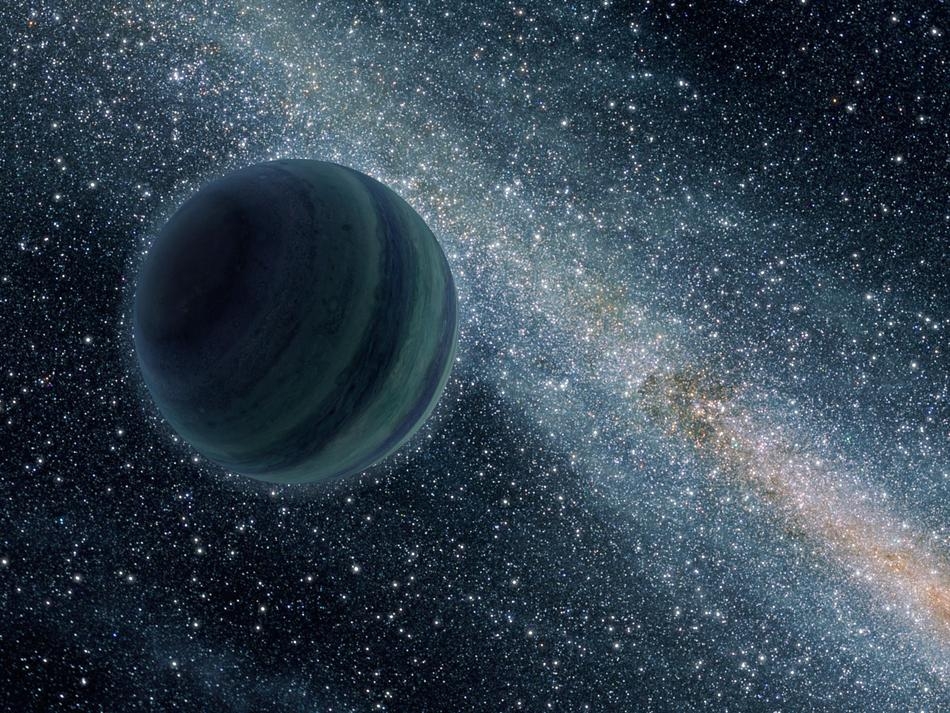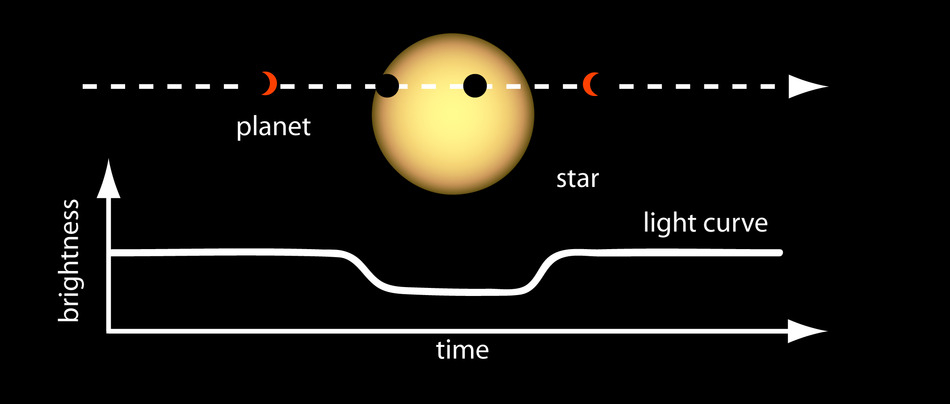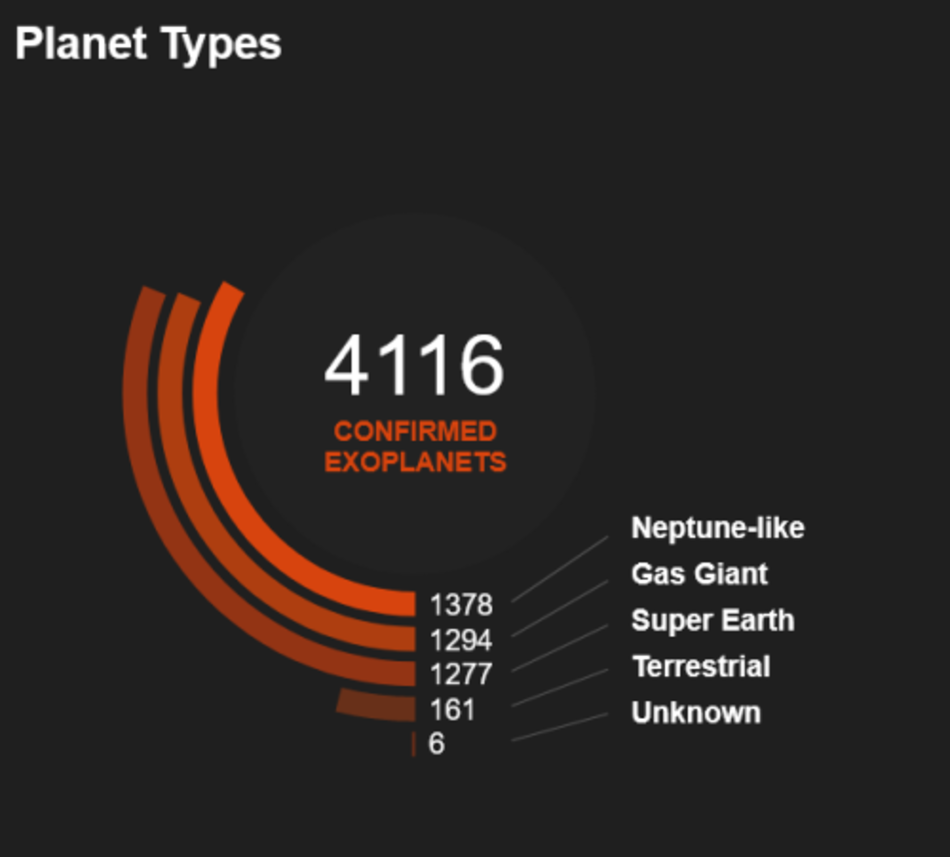
One of the most fundamental questions any human being can ask is: are we alone in the universe? The knowledge about the existence and characteristics of exoplanets is indispensable for giving us an answer. Everything that we have learned up to now indicates that life might exist on millions and billions of other planets in our galaxy alone: there is the pure mind-blowing number of exoplanets that orbit other stars in the habitable zone; in the entire universe there is an abundance of water, oxygen, carbon and all the other main elements that make up life as we know it; and life on Earth itself evolved relatively quickly after the formation of the solar system was completed. Anyhow, our current instruments do not yet allow us to detect life on other planets, but there is a whole lot of other information that we have been able to find out already. So let's have a closer look at exoplanets to better understand them.
Contents
Introduction
Types of exoplanets
Rocky Planets
Super Earths
Ocean planets and desert planets
Gas Giants
Hot Jupiters
Rogue Planets
How to detect exoplanets
How many exoplanets have we found so far?
How many planets there are in the entire universe?
A gallery of exoplanets
Introduction
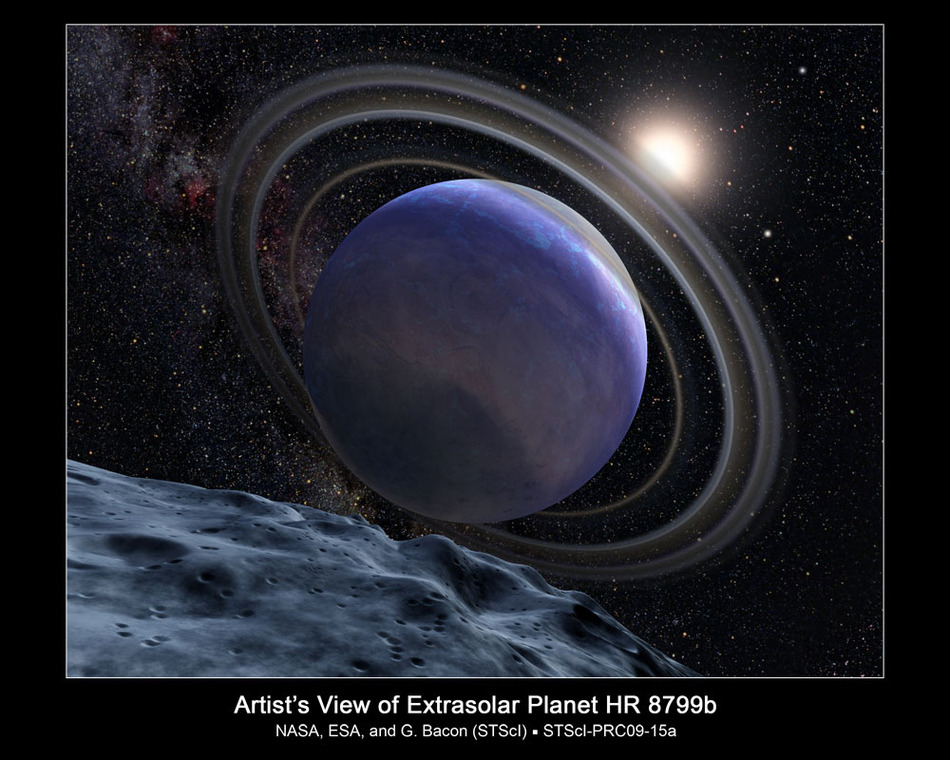 An artist's view of Exoplanet HR 8799 b. Credit: NASA, ESA and G. Bacon (STScl)
An artist's view of Exoplanet HR 8799 b. Credit: NASA, ESA and G. Bacon (STScl)Types of Exoplanets
As with the planets in our own solar system, exoplanets come in various sizes and compositions from small rocky planets to huge gas giants. But, in addition, other stars are orbited by types of exoplanets that do not exist in our solar system: hot Jupiters, super-Earths or ocean planets enlarge the spectrum of exoplanets beyond the rocky planets and gas giants that we know so well from our solar system.
-
Rocky planets
As in our own solar system, rocky planets (also called terrestrial planets), are very common in other planetary systems. Rocky planets are mainly composed of heavier elements such as silicon, oxygen or metals. Their solid planetary surface makes them especially suited for harbouring complex life. Most of these planets have a similar structure, caused by the effects of differentiation: immediately after its formation the planet was completely or at least partly molten, thus most of the heavier elements (mainly metals) sink down to the core of the planet and the lighter elements (such as silicon or oxygen) float above the metallic core. After millions of years of cooling the rocky planet is composed of a metallic core and a silicate mantle and crust. This same process of differentiation even works for many of the smaller asteroids. You can hold the proof in your own hands since we are very fortunate to have found iron meteorites and stony meteorites that have fallen on Earth. The iron meteorites were once part of the core, and the stony meteorites part of the crust of asteroids or protoplanets that were formed 4.5 billion years ago and were later destroyed by one huge or several smaller collisions. You can acquire some of these 4.5 billion-years-old contemporary witnesses yourself in our meteorite shop.
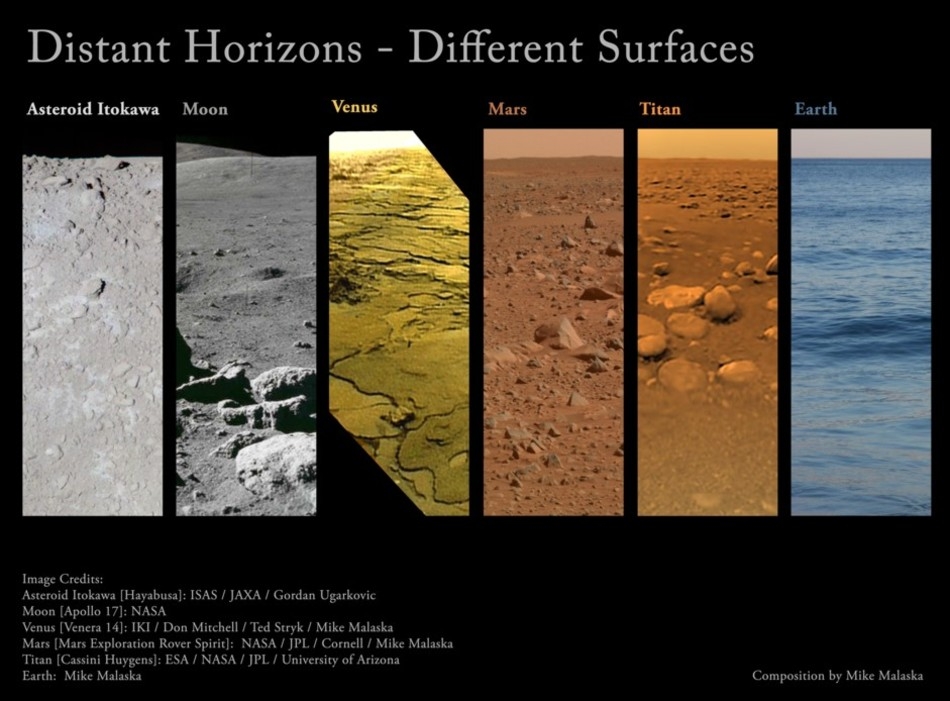 Different surfaces of bodies from our solar system. Credit: See lower left on image and Mike Malaska
Different surfaces of bodies from our solar system. Credit: See lower left on image and Mike MalaskaAll terrestrial planets are born without any significant atmosphere. During the planet's formation the light and volatile gases were blown away by the stellar wind of the host star. Thanks to outgassing from volcanic activity (mainly nitrogen and carbon dioxide) and the delivery of frozen gases and water by comet impacts, the planet can slowly build up a dense atmosphere, provided that its mass is sufficiently large to gravitationally bind the atmosphere strongly enough. A strong magnetic field also helps to preserve the atmosphere since it protects the planet from stellar winds which could otherwise strip molecules from the upper parts of the planet's atmosphere. If a planet loses its magnetic field it may also lose its atmosphere as you can read in the last paragraph of our Mars article.
-
Super-Earths
Super-Earths are planets of between 1 and about 10 Earth masses. The term super neither means super-habitable nor does it say anything about the surface conditions of the exoplanet, in this context it merely means larger than our Earth. Anyhow, super-Earths might be even more suitable for life than our own planet Earth - mainly due to their favourable tectonic activity. There are no super-Earths in our own solar system.
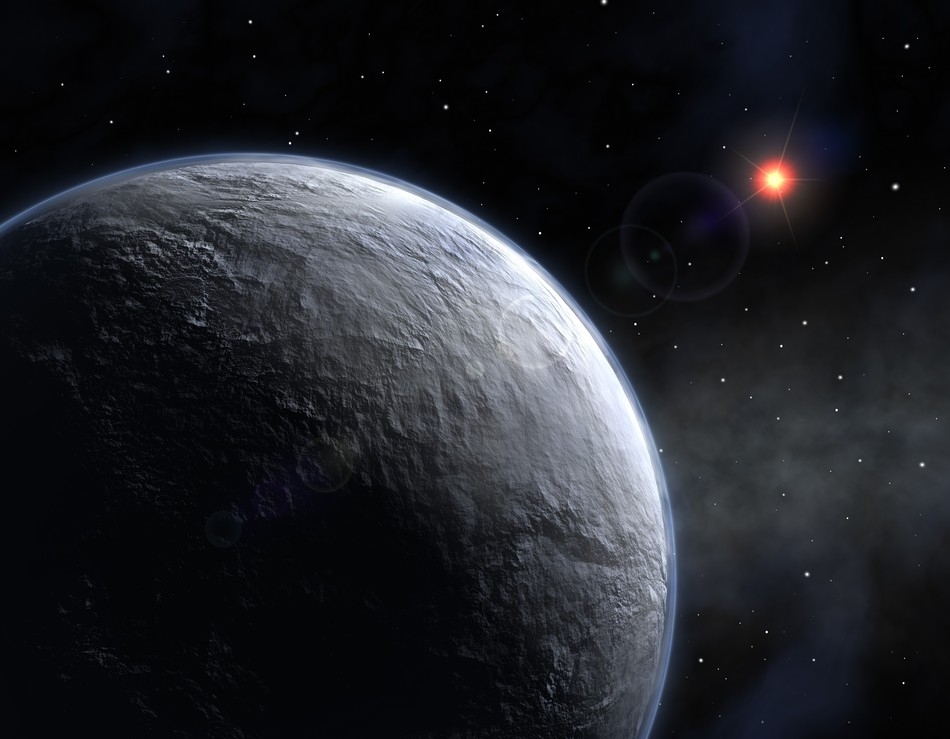 Artist's impression of an icy super-Earth, orbiting too far away from its host star to be in the habitable zone. Credit: ESO
Artist's impression of an icy super-Earth, orbiting too far away from its host star to be in the habitable zone. Credit: ESOSuper-Earths with a low bulk density are mainly composed of hydrogen and helium; those with higher densities are water-rich (ocean planets) or silicate-rich (rocky planets). After evaluating about 70 super-Earths it turns out that the density increases with the planet's radius up to a value of about 1.5 Earth radii; for larger planets the density rapidly drops. That means that super-Earths of up to 1.5 Earth radii are likely to be ocean planets or rocky planets with a thin atmosphere, still larger planets tend to have a rocky core with a massive and very dense atmosphere; they start to resemble smaller versions of gas giants.
-
Ocean planets and desert planets
Ocean planets (or water worlds) are planets with enough water to completely cover the entire surface of the planet with oceans. Potentially all rocky planets, including super-Earths, can become water worlds provided that the planet resides in the habitable zone of its star (where the surface temperature is between 0 and 100 °C) and comet impacts or volcanic outgassing have delivered enough water. Ice giants (like Neptune in our solar system) also have the opportunity to become ocean planets; they just have to migrate from further outside to a closer orbit in the habitable zone. This phenomenon is called planetary migration and it is not uncommon in planetary systems. Since the formation of our own solar system Jupiter has migrated towards the Sun whilst Uranus and Neptune have moved to more distant orbits. So, any ice giant moving into the habitable zone becomes an ocean planet that is almost entirely covered by water. The water will be liquid up to depths of 60 to 130 km; still deeper it will be solid due to the high pressure.
Could life evolve on a planet that is completely covered with water? Until now we have no scientific proof, but considering that life on Earth first evolved in the oceans it seems to be very likely that life could form on ocean planets too.The other extreme is a desert planet; a planet without any surface water. Such planets are quite common too; Mars is a good example inside our own solar system and Earth will become a desert planet in about a billion years due to the slowly increasing luminosity of the Sun that will cause all water to evaporate.
-
Gas Giants
All planets with masses exceeding 10 Earth masses are called gas giants. These planets probably have a small rocky core, but they are mainly composed of hydrogen and helium. We have four gas giants in our own Solar System: Jupiter, Saturn, Uranus and Neptune (even though Uranus and Neptune might also be categorized as ice giants due to their high water and ammonia content). Since huge gas giants are easier to detect than smaller rocky planets, the first exoplanets to be discovered were all gas giants.
-
Hot Jupiters
A hot Jupiter is a gas giant that orbits its host star in a very close orbit (0.015 - 0.5 AU), hence it's a high-temperature variant of a gas giant. Hot Jupiters were a big surprise to scientists when they were first discovered since we know that gas giants can only form beyond the frost line (or snow line), a certain distance from the parent star where hydrogen compounds such as water or ammonia have frozen into solid pieces of ice. Inside the frost line planets being formed cannot accumulate these hydrogen compounds because - in the gaseous phase - they are blown away by the stellar winds. Beyond the frost line the hydrogen compounds are condensed, solid pieces that are available for accretion into bigger planets. Hence all hot Jupiters must have formed outside the snow line and subsequently migrated to a closer orbit. As mentioned above, this process is not uncommon during the formation of planetary systems. Simulations have shown that migrations of gas giants are not as destructive for the birth of other planets as they might seem. There is a good chance that rocky planets of up to two Earth masses will form in the habitable zone even after the passage of a gas giant in this region of the stellar system.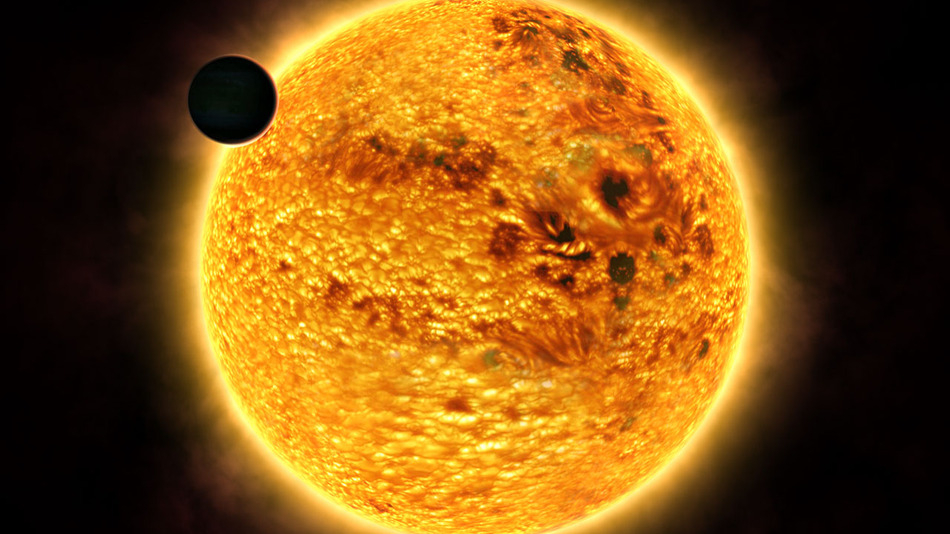 Artist's impression of planet HD 189733b transiting in front of its host star. HD 189733b is a hot Jupiter where the Hubble Space Telescope has found condensates of silicate, iron and aluminium oxide in its atmosphere. Credit: ESA, NASA and Frédéric Pont (Geneva University Observatory)
Artist's impression of planet HD 189733b transiting in front of its host star. HD 189733b is a hot Jupiter where the Hubble Space Telescope has found condensates of silicate, iron and aluminium oxide in its atmosphere. Credit: ESA, NASA and Frédéric Pont (Geneva University Observatory) -
Rogue planets
Rogue planets (also called nomad planets or orphan planets) are planets without a central star; they are free-floating throughout our galaxy. Since there is no star around them they are dark and very difficult to detect. It is estimated that the number of rogue planets in our galaxy exceeds the count of stars,so at least 200 to 400 billion rogue planets are now floating through the Milky Way. Rogue planets come in all sizes from small rocky planets to huge gas giants, but since they are so difficult to detect all the rogue planet candidates discovered up to now (such as, for example, CFBDSIR 2149-0403) have been huge gas giants. They can be directly imaged - especially in infrared - or they can be detected via microlensing. Microlensing causes a background star to appear a tiny bit brighter when a massive object passes in front of it.
Why are there so many planets without a central star? There are two main reasons why a planet can become an orphan planet.
- When a stellar system emerges it forms a central star and a protoplanetary disc within which the planets form. After the formation of the planets the stellar system is not yet stable; the planets first need to find their most stable configuration. Normally this means the most massive planets migrate into their most stable orbits. During this migration the massive gas giants might completely kick other planets out of the stellar system. Recent simulations have shown that - during its formation - most likely one planet will be kicked out of each planet-rich stellar system (such as, for example, our solar system). For the planetary system that's not as bad as it might sound; there are enough planets left, even if we lose one entire planet!
- The second option as to how rogue planets form is quite a simple one: the planet could have been directly accreted from an interstellar cloud of dust and gas in the same way stars form. If the total mass of the cloud was not sufficient to form a star the resulting object is a rogue planet. You could also call such a planet a failed star.
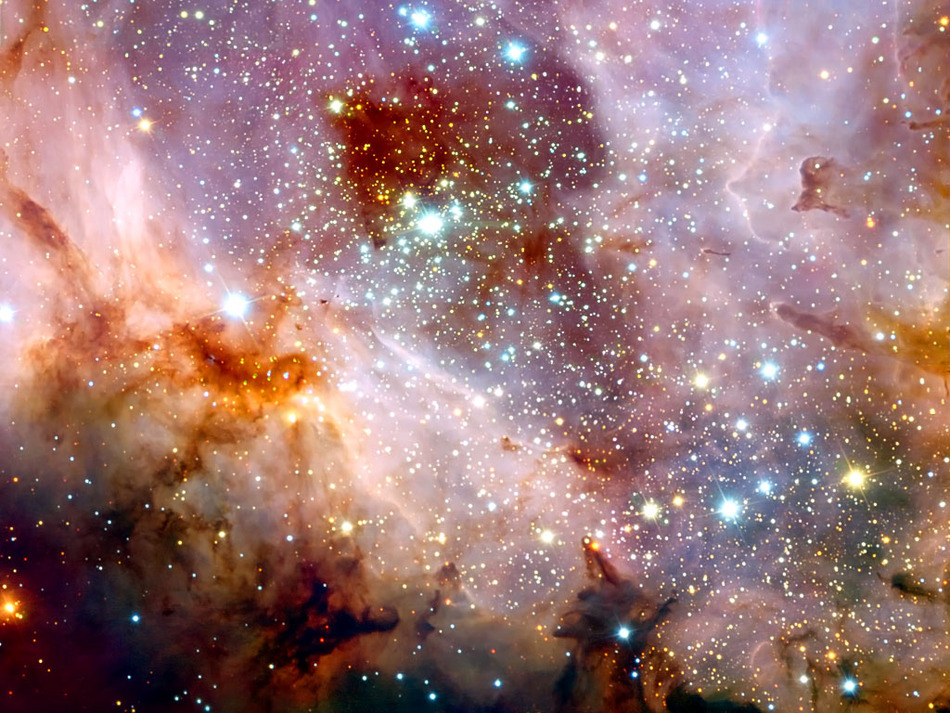 In star-forming regions we observe all sizes of dark nebulae; the bigger ones will become stars, the smaller ones "just" orphan planets. Credit: ESO / R. Chini
In star-forming regions we observe all sizes of dark nebulae; the bigger ones will become stars, the smaller ones "just" orphan planets. Credit: ESO / R. ChiniOur best theoretical calculations show that the vast majority of the rogue planets are failed stars. There could be many of these rogue planets for every star that forms, leaving us with the possibility that in our galaxy alone the number of rogue planets could exceed the above-mentioned 200 - 400 billion by far. It's also very interesting to follow Earth's destiny if our own planet suddenly became a rogue planet. Don't miss reading our article about Earth as a nomad planet!
How to detect exoplanets
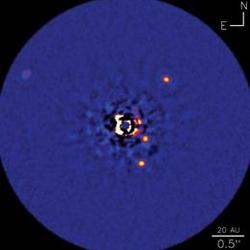
Exoplanets orbiting other stars are too far away to be directly imaged from Earth with currently available telescopes. There are a few exceptions of huge planets orbiting far away from their host star and some of the future telescopes currently under construction will be much more able to image exoplanets than can be done today. But direct images of exoplanets are currently exceptions and, in any case, we will not be able to see much more than a dot of light; nothing that could reveal any surface details of the planet.
But here is the good news: we are able to detect these planets anyhow, and in some cases we will even be able to analyse the composition of their atmospheres! So let's have a look at the two main methods for detecting exoplanets.
-
Radial velocity (or Doppler method)
To be very precise: a planet does not orbit around a star as we usually tend to say. The reality is that both the star and the planet orbit around their common centre of mass. Since the star is much more massive than the planet this centre is very close to the star or even inside its volume - but it is never the centre of the star itself. This means a star with planets around it is never completely motionless; it is orbiting around the common centre of mass of the entire stellar system. This wobbling of the star can be observed from Earth with help of the Doppler effect. You all know the Doppler effect since it causes the sound of an approaching object like a car or a train to sound high-pitched (the frequency of the sound waves are higher) and that of a departing object to appear lower (lower sound frequency). This effect works not only for sound waves but also for electromagnetic radiation. During its orbit around the centre of mass, the star moves towards us and away from us, thus the emitted light of the star slightly changes its frequency periodically as seen from Earth. The magnitude and frequency of the wobbling points to the existence, and even the minimum mass, of the planets in orbit around the star.
IMAGE A star that is wobbling around the common centre of mass. Credit: wikipedia.org, user: Zhatt
The only exception is if we observe the star directly perpendicular to the plane in which the planets orbit. In this case there is just a wobbling from the left to the right, thus the star is not moving towards or away from us during its orbit. In this case no Doppler effect can be measured here on Earth. Anyhow, not knowing the angle at which we observe the stellar system makes it impossible to precisely determine a planet's mass with the Doppler method; we can just estimate its minimal mass. -
Transit method
The transit method measures the slight drop in brightness when a planet transits in front of the star (as seen from Earth).
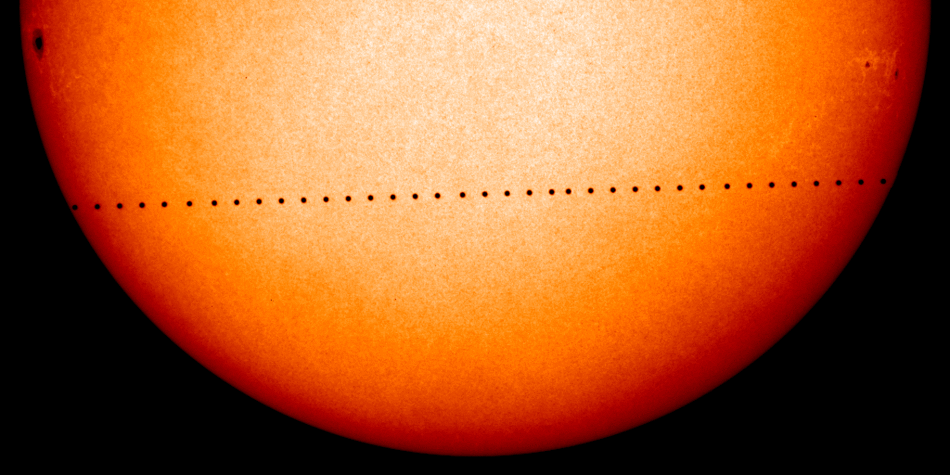 Mercury transits the Sun on November 8, 2006. Transit path as seen from SOHO. Credit: ESA / NASA's Solar and Heliospheric Observatory (SOHO), 2006
Mercury transits the Sun on November 8, 2006. Transit path as seen from SOHO. Credit: ESA / NASA's Solar and Heliospheric Observatory (SOHO), 2006With this method we can only find a minor fraction of the existing exoplanets since the Earth, the exoplanet and its star have to be perfectly aligned in order to observe an exoplanet's transit. For example, the odds of detecting the Earth from any random position outside our solar system with the transit method are just 0.3%, the chance of discovering Mars would be just 0.18%. Nevertheless, space observatory Kepler has continually measured the light curves of 145 000 main sequence stars over a period of several years, finding hundreds of exoplanets using the transit method.
With the help of the transit method we can not only detect one or more planets in a stellar system, we can also gain other valuable information:
- The size of the planet can be estimated by the amount of dimming. Bigger planets cause a stronger drop of the light curve than do smaller planets.
- With the right instruments we can even analyse the atmosphere of the planet. How is this possible? A part of the light from the star passes through the atmosphere of the planet. Different molecules in the atmosphere block specific wavelengths of the star's spectrum. By measuring the so-called transmission spectrum here on Earth we are able to determine the composition of the planet's atmosphere. With the new telescopes that will be operating within the next decade we might even find so called bio-markers, certain molecules that could be a sign of extra-terrestrial life!
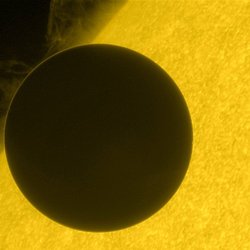
Venus transiting the Sun as seen from Earth. You can observe Venus' atmosphere in this image. Credit: JAXA/NASA/Lockheed Martin
How many exoplanets have we found so far?
As of February 2014 the Kepler space telescope has discovered 961 exoplanets in more than 76 stellar systems, the number of planet candidates (not yet confirmed as exoplanets) exceeds 2900. The graph below illustrates the sizes of planet candidates Kepler has found:
The total number of confirmed exoplanets discovered by Kepler and other telescopes is 1779 as of 20 March 2014. This number is constantly increasing as more and more exoplanets are discovered. All officially confirmed exoplanets are listed in the Extrasolar Planets Encyclopaedia.
How many planets there are in the entire universe?
The short answer is: no one knows. When you read there are at least 200 billion planets in our galaxy alone then this is not the best estimate, this is just a lower limit. But we can try to estimate the data of space telescope Kepler combined with the probability of detecting planets from a random position (remember: using the transit method the chances of detecting Earth from any random position outside our solar system are just 0.3%). So, if you give an estimate - based on probability calculus - of the total number of planets it is closer to 10 trillion planets in the Milky Way alone! If we were to expand these considerations to the observable universe we would come up with 1024 planets, or if you prefer the number written out:
1 000 000 000 000 000 000 000 000 planets
Again, the universe reveals its majestic size! If you are interested this article by Ethan Siegel (from 2013) will show you the estimation in more detail.
A gallery of exoplanets
Now let's have a look at some of the exoplanets we have discovered so far and what these planets might look like. Our special section about exoplanets presents some of the most beautiful artists’ impressions.
